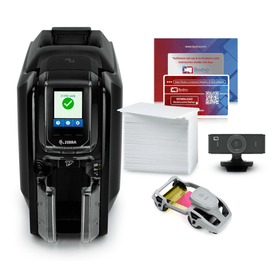ID card printers these days are primed towards delivering a myriad of security features to companies that want high-level benefits in that department. Of the popular options, proximity card encoding and magnetic stripe card encoding are probably the most sought after, mainly due to the effective ways in which they step up card security. It is possible to use these either together in a card or separately.
Magnetic Encoding
Mag stripe or magnetic strip encoding is a low cost method of pushing more data into a card that gets staff and visitors through security. A magnetic encoder lets your card store information on a mag stripe, which is normally located on its back. Most printers, including the IDP dipsmart70, come with the mag strip encoder option when you buy them. For the models that lack this feature, it is generally possible to add it on after the purchase.
Swipe cards are used by swiping them through a security reader, which is a lot like the way you pay for something using a credit card. The reader deciphers the data present inside the stripe, and based on that, either allows or denies authorization to the person who swiped. Such a card is best suited to convenience-based, low-security environments and applications, such as in hotel rooms, attendance systems, and regular secure access.
Proximity Card Encoding
Prox cards are basically contactless cards, which means you do not need one to be physically touching a reader while the latter scans for data. All it needs is proximity; hence the name. The user simply waves the card in immediate area to the front of the reader, which is good in the long run because it cuts down wear. These cards contain unique numbers encoded in such a way that they can only be read by the right reader. Because of that, the data on each card remains unchanged, even when it is scanned by a wrong reader.
Proximity cards are ideal for the security levels required at facilities where traffic reaches a high level on a daily or even hourly basis. If there were only a specific number of openings to pass through, and no sure limit to the number of authorized people showing up, then it would speed things up if every person could walk in after simply waving their card in front of a reader.
















